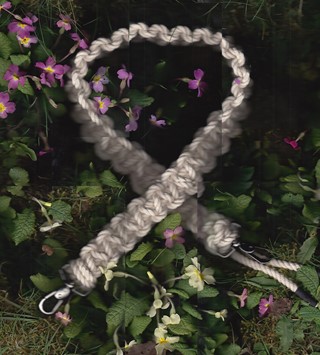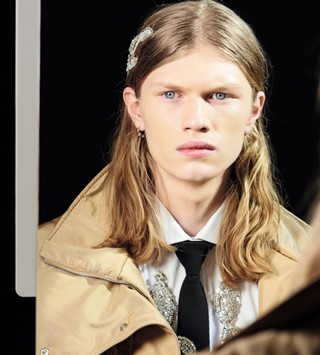The latest merch from the designer’s fictional band Samizdat sees him mine the iconography of 1980s industrial metal music
- TextJack Moss
Samizdat is the fictional band created by Yang Li in 2016 – the culmination of a lifelong obsession with industrial metal music, and early 1980s acts like Ramleh, Maurizio Bianchi and Controlled Bleeding. In the years since, Li has released a series of capsule collections under Samizdat – which means ‘self-publish’ in Russian – encompassing mock band merchandise, from t-shirts and hoodies to MA-1 bomber jackets, alongside numerous contributors including Federico Capaldo, Chris Blohm and Jamie Andrew Reid.
Now, Li has launched the latest chapter – Samizdat VI, for A/W19 – which expands the collection to include a new range of outerwear, including goth-leather trench coats, parkas and denim jackets, though Li remains inspired by bootleg and subcultures far away from the fashion industry. “The Samizdat VI release continues the music obsession on to the highly visual genre of metal – black metal and industrial metal,” Li tells Another Man.
Specifically, inspiration for this latest iteration came from early-1980s zines and DIY tapes, Li working alongside artists J.s. Aurelius, Adam Richardson and independent record label Ritual Productions, as well as Justin Broadrick of pioneering Birmingham-formed industrial metal band GODFLESH, on the collection (the latter’s band logo appears throughout). It continues a fruitful list of influential music-world collaborators – in February last year, Li worked alongside Genesis P-Orridge of Psychic TV on Samizdat’s A/W18 collection.
An accompanying lookbook – photographed by Salvatore Caputo and styled by Another Man’s fashion director Ellie Grace Cumming – mines metal music iconography, the model’s face obscured by a mane of long blonde hair. “Fashion is all to do with storytelling and being able to seduce the audience with products and the world in which they inhabit,” Li explains of the project, which has allowed him an outlet unconstrained by the boundaries of the traditional fashion industry. “Music is a profound part of that storytelling and almost of all the time there is a soundtrack to my work in my head during the process; sound is a visual matter.”















